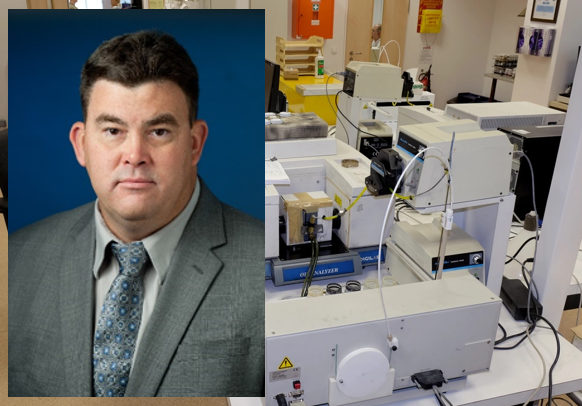 Mr. Jim Baker, AOAP Program Manager
Mr. Jim Baker, AOAP Program Manager
Mr. Baker has served as PM since 2011 and been affiliated with AOAP since 2007. He entered federal service in 2002 as an Army Materiel Command fellow and then served in a variety of assignments in CONUS and overseas, while also attending graduate school.
MSG Half-Mast: Would you offer a brief history of the Army Oil Analysis Program (AOAP) and how long has it been existence?
Mr. Baker: The Army established its first oil analysis laboratory at Ft Rucker in 1961. In 1975, the AOAP Program Management Office was established and the program was expanded to include ground combat systems. Tactical wheeled vehicles were added in 1977 and support equipment 1979.
The AOAP is a member of the Joint Oil Analysis Program (JOAP). The JOAP was established in 1967 with the signing of a tri-service agreement by the service secretaries. AOAP requirements are outlined in Joint Regulation (AR 700–132/OPNAVINST 4731.2/AFI 21–13) and Army Regulation 750-1.
MSG Half-Mast: Why was the program deemed necessary? Was there anything in particular that led to it being instituted?
Mr. Baker: The Army’s oil analysis program was established after a Navy oil analysis laboratory detected impending failures on Army helicopters. Like any preventive maintenance effort, the cost of not having a program specifically focused on Army equipment was deemed too high and resulted in the creation of the Army’s first lab and the expansion of the program over time.
Oil analysis ensures we’re ahead of the curve when it comes to keeping our air and ground systems combat ready. The cost of the program is far outweighed by the costs associated with having to replace failed engines, transmissions, hydraulics or even complete platforms. More importantly, the AOAP enhances the safety of the personnel that operate these systems.
MSG Half-Mast: How has the AOAP evolved since it began? Put another way, what lessons have been learned and implemented to make the program more responsive and effective over its existence?
Mr. Baker: As you might expect, the increasing accuracy of our laboratory instruments over time has resulted in the ability to detect problems down to the parts-per-million level. This greater accuracy means we can detect potential problems earlier and provide more appropriate guidance to maintainers.
We’ve also been able to move toward more targeted enrollments that focus on critical weapon systems, specifically aviation, watercraft, combat vehicles and locomotives. Targeted enrollments ensure prioritization of effort so we can allocate our resources more effectively.
When barcoding came along, it significantly increased the efficiency of laboratory operations. Looking back, it’s hard to imagine we ever operated without it.
Finally, data integrity has increased with the integration of the AOAP’s laboratory information management system (OASIS) and the Army’s enterprise maintenance system (CGSS-A).
MSG Half-Mast: Why is it important for units to participate in AOAP and how does the program affect Army readiness?
Mr. Baker: AOAP laboratories detect a wide variety of failure modes in engines, transmissions, gear boxes, and hydraulic systems at their onset, such as contaminated, degraded, and incorrect lubricants, internal corrosion, bearing wear, gear wear, air induction leaks, fuel leaks, coolant leaks, etc., and issue actionable maintenance recommendations to Army maintainers.
The benefits of AOAP analyses are threefold. First, AOAP laboratories provide actionable maintenance recommendations that result in improved readiness, reduced maintenance costs, and enhanced operational safety. Second, AOAP laboratories reduce life-cycle sustainment costs across the Army by optimizing oil change intervals. And third, AOAP laboratory analyses support improvements to lubricant formulation, filtration and component design.
MSG Half-Mast: We understand the program may experience a period of disruption beginning in Feb 2022. What can you tell us about this disruption and how the program office will mitigate its effects?
Mr. Baker: The AOAP will experience a gap in service for it laboratory operations contract beginning in February 2022. Unit procedures will remain unchanged. However, units are advised that sample turn-around times may increase. Units will be advised when laboratory operations return to normal. Until then, units can contact the AOAP PMO for help at (256) 955-0236 or email:
usarmy.redstone.asc.list.aoap-field-ops@army.mil
Hours of operation are 0700 to 1600 CST, Monday through Friday.
To learn further details about the temporary gap in service, read the article
HERE.